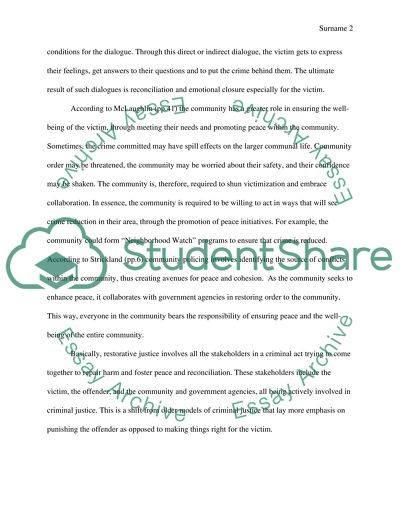Retrieved from https://studentshare.org/law/1454086-1-define-the-concept-of-restorative-justice-a-high-scoring-answer-will-discuss-the-ways-in-which-restorative-justice-focuses
https://studentshare.org/law/1454086-1-define-the-concept-of-restorative-justice-a-high-scoring-answer-will-discuss-the-ways-in-which-restorative-justice-focuses.


